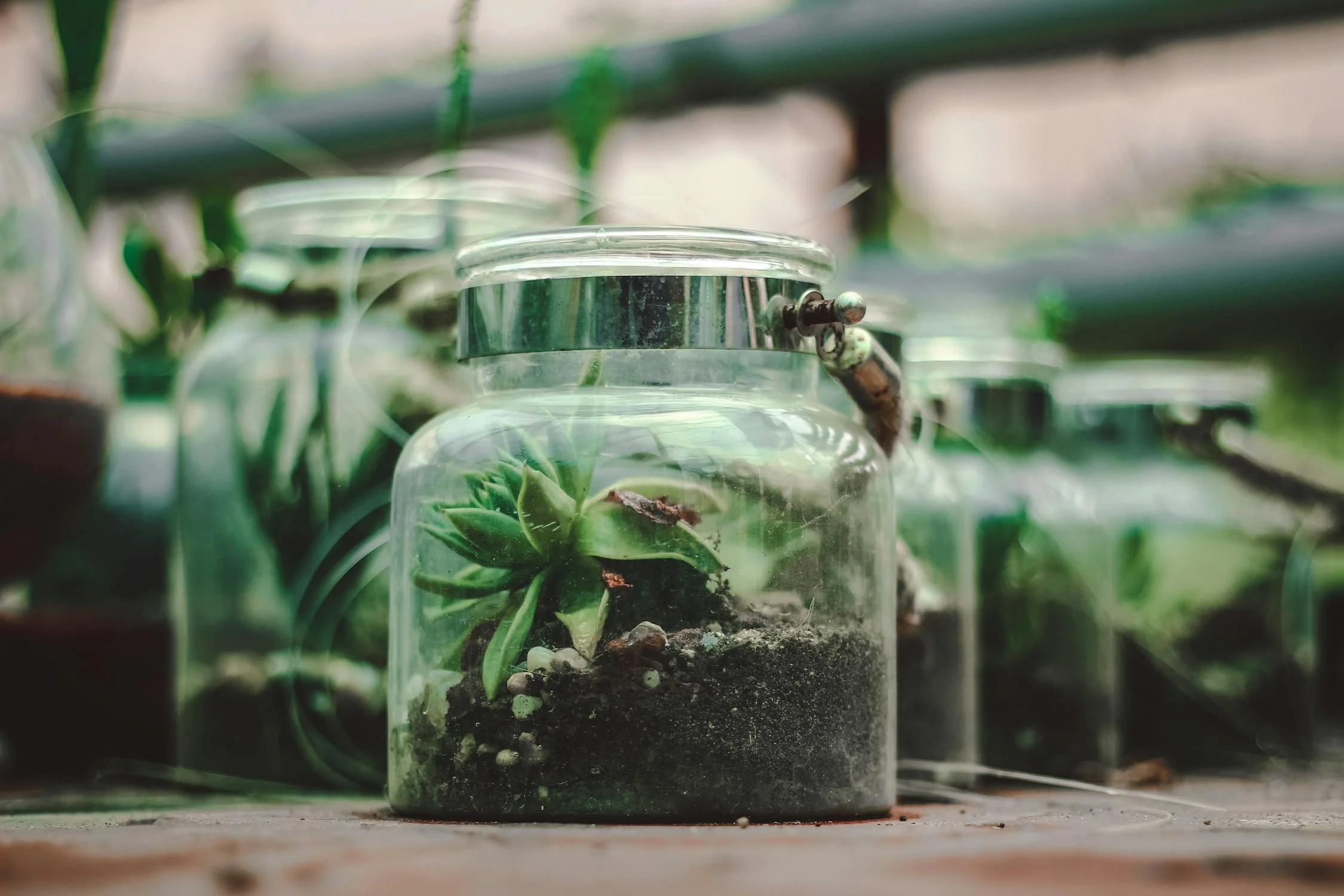One enjoyable yet little-known pastime is creating terrarium jars. A terrarium is a compact, self-contained ecosystem that houses living organisms, including plants and animals in an enclosed space.
It can be a hobby for those who love planting or gardening but lack sufficient space. These jars are space-efficient and require minimal upkeep, making them ideal for novice plant caregivers.
This blog will cover the history of terrariums, explain how they thrive in their environment, and provide instructions for creating your mini-terrarium.
History Of Terrarium Jars
In the early 1820s, botanist Dr. Nathaniel Bagshaw Ward inadvertently developed terrariums as we know them today. While investigating the behavior of insects in glass containers, he spotted a fern. This prompted him to explore the matter further and discover that plants can flourish in a restricted environment. This is achieved by reusing the moisture that builds up when the glass jar is sealed.
People initially called these jars ‘Wardian Cases’ and primarily used them for transporting and safeguarding plants on lengthy sea journeys. The sealed environment allowed the plants to flourish even in the harsh conditions of the sea climate.
Later, as interest in botany and exotic plants grew, many individuals began to cherish their terrarium plants within terrarium jars. In the 20th century, however, interest began to wane.
In the 21st century, interest reignited as terrarium jars were viewed as a creative means of introducing greenery into homes. They quickly became popular as people realized these plants were easy to care for and were seen as an environmentally friendly hobby. In addition, the rise in popularity of creating terrarium jars can be attributed to social media.
How Do They Survive?
Plants that thrive in a moist environment are ideally suitable for terrariums. The enclosed nature of your plant retains moisture in the jar, and it grows in a perfect environment.
A terrarium jar consists of 4 layers, which are:
- Gravel
- Moss
- Soil
- Decorative Layer
The gravel is a water drainage system in your jar, draining away all excess water. While the Moss aids in stopping the development of toxins and odors, the soil supplies nutrients to your plant. Finally, the decorative layer comprises small decorative stones or seashells.
Furthermore, you can include activated charcoal to absorb impurities, as it aids in preventing the growth of molds, bacteria, or fungus in your jar.
What Are Different Kinds Of Terrarium?
Before crafting your terrarium jar, it’s crucial to grasp the two distinct types of terrariums:
- Native Terrarium
You can create a native terrarium using basic materials available in your locality. Your supplies can be easily obtained from a nearby forest, garden, or park.
It is advantageous due to its low cost. Nevertheless, the likelihood of encountering insecticides is considerable, and your ability to select specific types of soil and plants will be limited.
- Curated Terrarium
A curated jar is made from materials purchased at a store and will permit you to select your desired soil and plant. Nonetheless, one disadvantage might be the expense of native terrariums, and necessitate higher care and attention.
How To Make Your Terrarium Jar?
As you are familiar with what a terrarium jar is, its history, and the various types. Here’s how to create your glass terrarium.
1. Gather Things You Need
After determining the type of terrarium you wish to create, make sure to collect all necessary materials, including:
- Glass Jar
- Pebbles
- Moss
- Mesh & Soil
- Activated charcoal
- Small plants
- Decorative items (optional)
(Note: if you lack charcoal, you can either purchase store-bought options to avoid toxins or make some on your own).
After you have gathered all the required materials, clean them thoroughly.
2. Add Pebbles
Put some small stones into the glass jar. This is crucial because the pebbles will serve as a drainage mechanism to prevent water from accumulating at the bottom. They will serve as your gravel.
3. Add Moss/ Charcoal
In the third step, you should include activated charcoal. This will assist in preventing toxins and serve as a filter for water and air. If you cannot access charcoal, you can use moss instead.
Also Read: DIY Crafts: Making Items from Recycled Resources
4. Start Planting & Add Decoration
Gently position the plant in the soil. After completing the task, you can include some embellishments, like colored stones. By decorating, you can enhance the visual appeal of your plant. It is, however, not mandatory.
Finally, close the lid tightly to maintain good moisture levels for your plant.
How Much Water Should You Add To Plants In A Terrarium Jar?
One common question when crafting a terrarium jar is how much water to provide and how often. The plant is in an airtight container, leading to a high level of moisture recycling. Therefore, it is crucial to avoid adding too much water, as this can be fatal for the plant. You can use a spray bottle to apply some instead.
